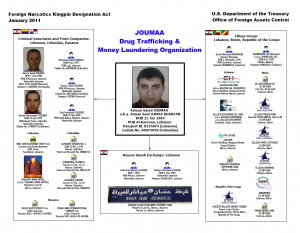On the Manning Art. 32, Court Secrecy & Nat. Sec. Cases
 I somehow stumbled into an article for The Nation by Rainey Reitman entitled Access Blocked to Bradley Manning’s Hearing. To make a long story short, in a Twitter exchange today with Ms. Reitman and Kevin Gosztola of Firedoglake (who has done yeoman’s work covering the Manning hearing), I questioned some of the statements and inferences made in Ms. Reitman’s report. She challenged me to write on the subject, so here I am.
I somehow stumbled into an article for The Nation by Rainey Reitman entitled Access Blocked to Bradley Manning’s Hearing. To make a long story short, in a Twitter exchange today with Ms. Reitman and Kevin Gosztola of Firedoglake (who has done yeoman’s work covering the Manning hearing), I questioned some of the statements and inferences made in Ms. Reitman’s report. She challenged me to write on the subject, so here I am.
First, Ms. Reitman glibly offered to let me use her work as “foundation” to work off of. Quite frankly, not only was my point not originally to particularly go further; my point, in fact, was that her foundation was deeply and materially flawed.
Reitman starts off with this statement:
The WikiLeaks saga is centered on issues of government transparency and accountability, but the public is being strategically denied access to the Manning hearing, one of the most important court cases in our lifetime.
While the “WikiLeaks saga” is indeed centered on transparency and accountability for many of us, that simply is not the case in regard to the US Military prosecution of Pvt. Bradley Manning. The second you make that statement about the UCMJ criminal prosecution of Manning, you have stepped off the tracks of reality and credibility in court reportage and analysis. The scope of Manning’s Article 32 hearing was/is were the crimes detailed in the charging document committed and is there reason to believe Manning committed them. Additionally, in an Article 32 hearing, distinct from a civilian preliminary hearing, there is limited opportunity for personal mitigating information to be adduced in order to argue for the Investigating Officer to recommend non-judicial punishment as opposed to court martial trial. That is it. There is no concern or consideration of “transparency and accountability”, within the ambit suggested by Ms. Reitman, in the least.
Calling the Manning Article 32 hearing “one of the most important court cases in our lifetime” is far beyond hyperbole. First off, it is, for all the breathless hype, a relatively straight forward probable cause determination legally and, to the particular military court jurisdiction it is proceeding under, it is nothing more than that. The burden of proof is light, and the issues narrow and confined to that which is described above. The grand hopes, dreams and principles of the Manning and WikiLeaks acolytes simply do not fit into this equation no matter how much they may want them to. Frankly, it would be a great thing to get those issues aired in this country; but this military UCMJ proceeding is not, and will not be, the forum where that happens.
Moving on, Reitman raises the specter of “the death penalty” for Manning. While the death penalty remains a technical possibility under one of the charges, the prosecution has repeatedly stated it will not be sought and, after all the statements on the record in that regard, there is simply no reason to embellish otherwise. Reitman next states:
This case will show much about the United States’s tolerance for whistleblowers who show the country in an unflattering light.
No, it most certainly will not. In fact, the Manning criminal military prosecution has nothing whatsoever to do with “whistleblowers”. Despite the loose and wild eyed use of the term “whistleblower” in popular culture, not to mention by supporters of Bradley Manning, the concept Read more →


